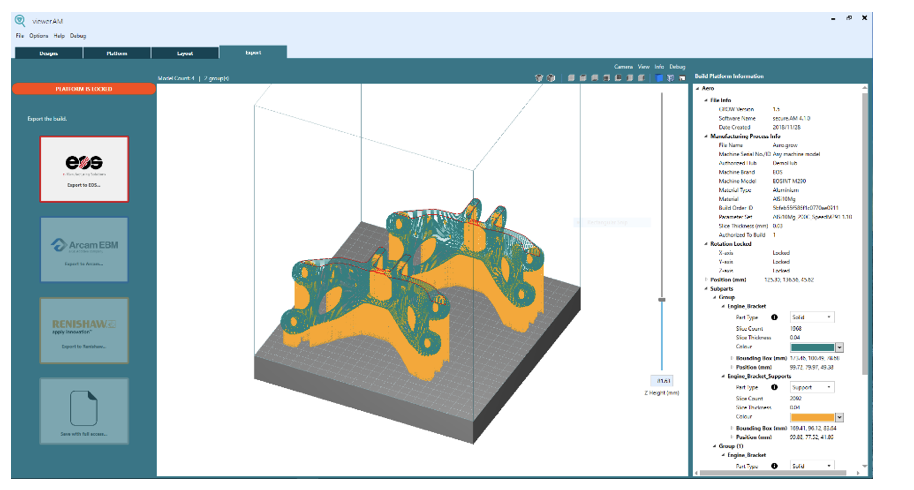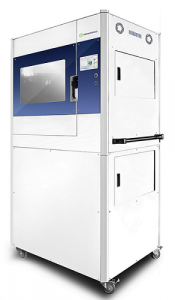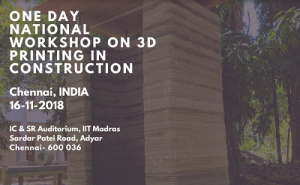Being such a young industry, we have only a few giants. One of them is Friend Vancrean. The soft-spoken Fried started as a research scientist before starting Materialise over thirty years ago. Quiet, analytical, and wise Fried has guided Materialise through three decades of 3D printing development. Over that time, the Belgian firm has become a large 3D printing service that is also the de facto leader in 3D printing software. To disclose my biases, I should point out that I’ve worked for Fried, and I admire him. No one else in 3D printing has proven to be as gifted at identifying new business opportunities in 3D printing and avoiding perilous markets. With a long track record, Materialise has pioneered the production and software chain in hearing aids, dental guides, surgical guides, CMF implants, prototypes, car parts, aircraft parts, and functional prototypes. Magics is the default file preparation and planning tool for industrial 3D printing, while software such as 3Matic and Mimics let cutting edge researchers practice their craft. As one of the few publicly traded 3D printing companies, Materialise is closely watched. 3DPrint.com caught up with Fried at formnext to discuss the past three decades of 3D printing as well as the next ten years.
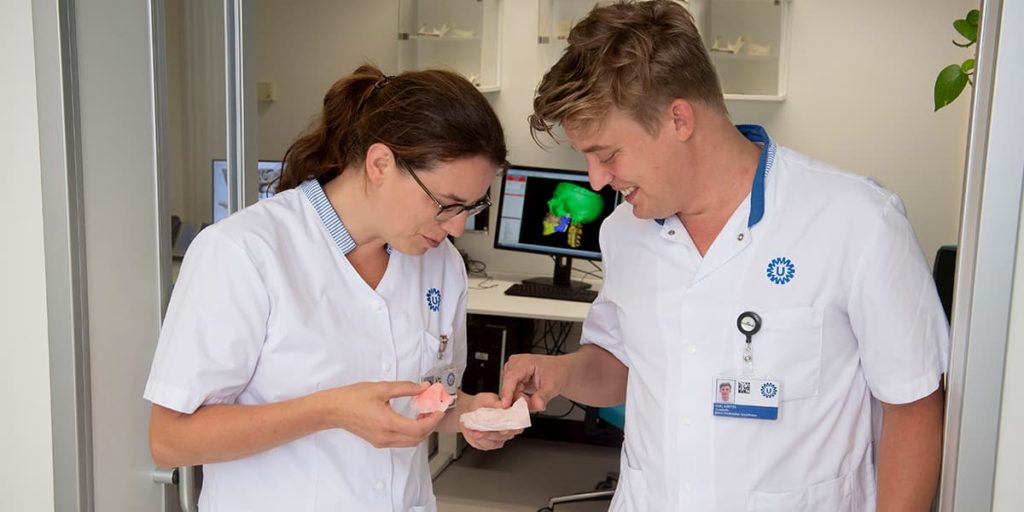
An in-hospital 3D printing lab at the University of Utrecht facilitated by Materialise
Fried says that he and the firm are proud of their financial results, and that “in all three segments..software, medical and manufacturing..the firm has shown growth” with “positive EBITA in all three segments.” Materialise must now “maintain growth and yield” while “3D printing value.” The main method that the firm has had in creating and maintaining value is to “invest in technology” and then to “develop technology that delivers enough value so that people will pay you for the service.” This seems rather simple, but the devil is in the details. “Materialise has proven to be able to deliver value for over thirty years.” In regards to BASF’s Sculpteo acquisition, he says that the firm was well informed ahead of time and “had decided to invest in certain materials and applications together with BASF,” “outside of these BASF wanted to do other market development on its own.”
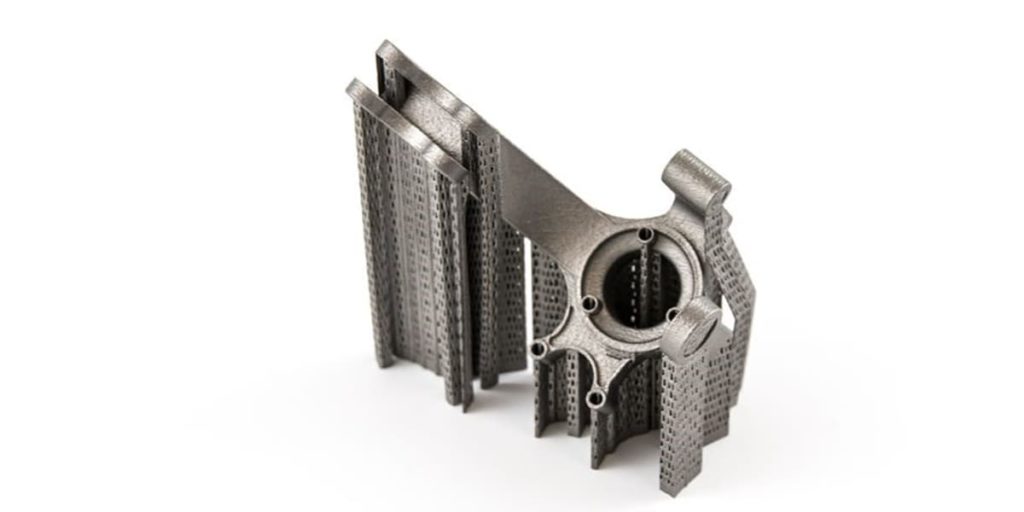
Materialise’s three segments all require different levels of investment and product development. The firm is “active in many vertical markets as well” in such diverse areas as “eyewear, polymer aircraft interiors, and medical software.” In all of these segments, a common thread is to “adhere to the right quality systems for the right application and vertical” production of a highly regulated aircraft part is very different from a similar part as a medical implant or prototype. Each vertical “has completely different tolerances, needs different environments, and entirely different product lines.” “A CMF implant part is very different and has a very different quality system than an orthopedic implant.” Choice across its broad portfolio is, therefore, a defining characteristic for Materialise. “We don’t just say everything; we don’t just do everything.”
Currently, Fried sees the market as “evolving” with manufacturing taking over from prototypes and concept models. New applications such as “motor and power train components” are now existing next to a “concept and prototypes.” In some sense, many of Materialise’s technologies are complementary, but in others, new methods will have to be discovered. Materialise must, therefore, in a “conscious and determined way make choices in manufacturing.”

A patient specific model can be used to plan or understand surgeries
In some sense, this is what the firm has always done. Fried divides up the last thirty years into three distinct segments “in the first ten years it was a question of proving that it works,” then the “second period was about scaling up,” and the third is “manufacturing.” In 3D printing’s first decade, “we had to prove that prototyping was a viable business,” and it became essential to see to it that “CAD systems and print systems were combined.” “Proven software,“had to be able to produce the parts that customers needed. In the second period, a “scale up” was required, “we had to go from prototyping to manufacturing” and had to “organize manufacturing” in a traceable and documented way. The third period “meant that the firm has to upscale manufacturing” and “cost down.” That period was all about “productivity and connectivity,” and “advanced software was needed to optimize processes and results.” Now we enter the fourth period in the history of 3D printing where “next-generation tools” become part and parcel of the “industrial future.” In keeping with this Materialise is introducing New Product Introduction tools stemming from its own NPI focussed efforts in 3D printing.
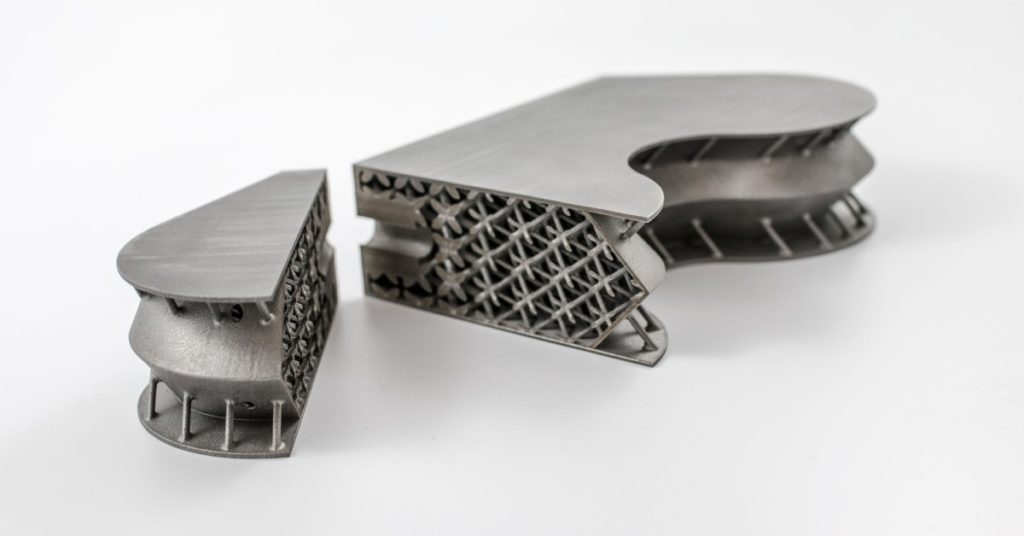
A cross section of a lightweighted space craft part made by Materialise
“Now, tools will help us go from prototyping all the way to a sustainable product.” With “NPI tools, we’re looking for process optimization” that let you develop a “fine-tuned product” that is “production-ready.” In a case with a customer, the firm has found that it can reduce some extremely long product introductions from years down to a month. Fundamentally he believes that “new tools and new inventions are required.” He sees that “many of today’s OEMs in the market are simply cheaper copies of existing technology.” So far, he contends that “if you want to manufacture, people will stay with EOS.” It is rare to see things like “HP’s MJF that brings some parts into a new cost category.” When asked, he says that he “believes in clustered manufacturing” through smaller desktop 3D printers for certain parts, “but only once those printers have improved significantly” in their build quality. “Consistent data is required..from consistent machines to get..consistent parts.” Once “know-how and competency” leads to “consistent printers..that work in quality systems,” we will see genuinely new developments.
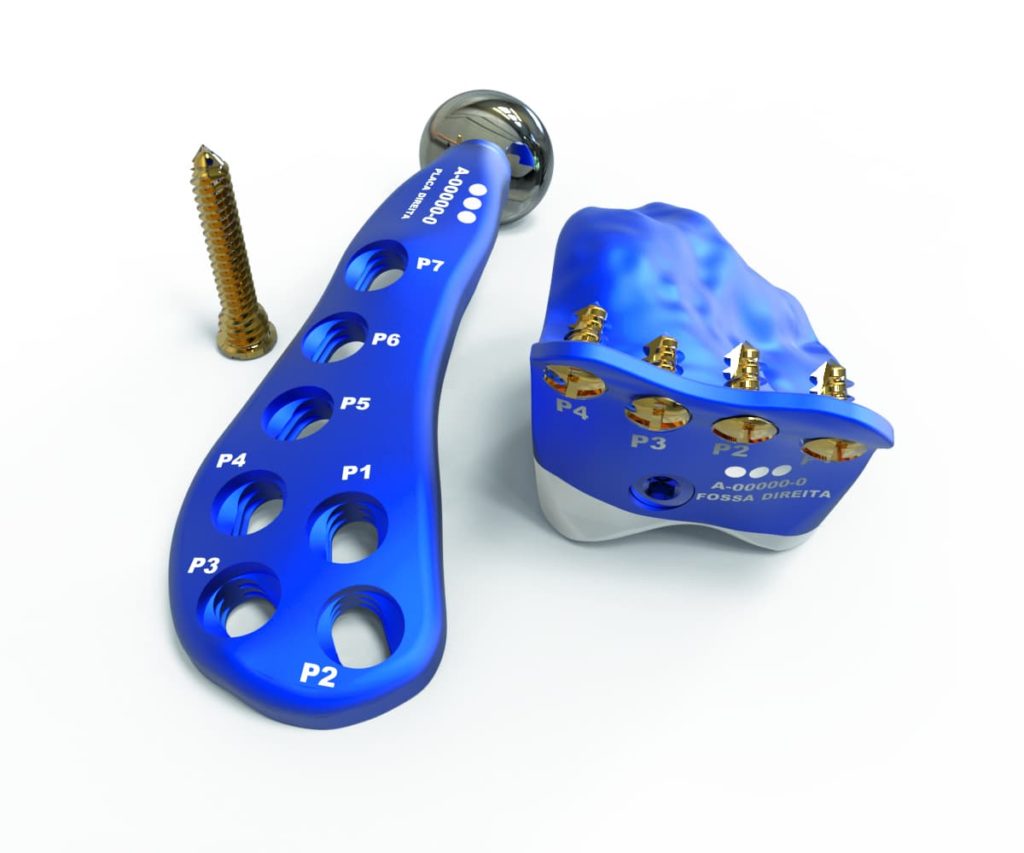
The firm is now an orthopedic implant manufacturer.
If we look at the next ten years in 3D printing, Fried hopes that “Materialise will continue to create value while delivering” on the “next generation of tools” that focus on “bringing costs down and analysis.” At the same time, hopes that Materialise can continue to “strive for a better and healthier world” while remaining a “3D printing sector thought leader.” In the beginning, the company had no idea how to ” “in a systematic way have a positive impact.” Now with the United Nations 17 Sustainable Development Goals, there is a “global compact, in fact. a quality framework, a framework for a better world.” Helping the firm conduct itself according to this framework. “Every year, he hopes that Materialise is better not only as a business but also how to make products for a better world.” One of the ways the company is tackling this is “to create high value recycled products from waste products“, something it will showcase at the Materialise Summit in May.
The post Interview with Fried Vancraen on 30 Years in 3D Printing appeared first on 3DPrint.com | The Voice of 3D Printing / Additive Manufacturing.



